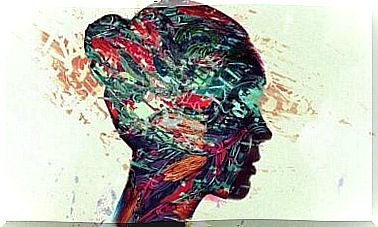Behavioral Therapy To Treat Generalized Anxiety Disorder (GAD)

Anxiety and excessive worry are symptoms of generalized anxiety disorder (GAD). In this regard, Dugas and Ladouceur pointed out that people with GAD are more concerned about thoughtless circumstances.
People with generalized anxiety disorder worry about things that may not happen and are always on the lookout. Therefore, they have more anxiety, have trouble controlling their emotions, and always want to control their thoughts.
Cognitive Behavioral Therapy (CBT)
Cognitive behavioral therapy (CBT) combines Beck’s therapy and relaxation techniques. Clinical research confirms that CBT and relaxation techniques are involved in treating GAD.
Generic cognitive behavioral therapy consists of:
- Determining internal and external factors that cause anxiety and how people react to them.
- To control these factors to avoid worries.
- Relaxation. There are various techniques such as progressive relaxation, slow breathing and meditation.
- Cognitive adjustment. The patient identifies thoughts, images and beliefs related to anxiety. The Socratic method is then used to examine the pros and cons and to interpret these feelings.
- Gradually expose the patient to internal factors that cause anxiety. This can teach the patient to deal with their anxiety properly.

Borkovec’s cognitive behavioral therapy for generalized anxiety disorder
Borkovec’s CBT includes all the elements of generic CBT and includes two others: acceptance and commitment.
- Minimize negative thoughts. The idea is to live in the present without creating false expectations about the future.
- Living by values. To identify the patient’s values to help them live according to them.
Barlows therapy
Brown, O’Leary, and Barlow developed a treatment for GAD that consists of identifying the problem, justifying treatment, relaxation, cognitive restructuring, exposure therapy, preventing alertness, and time management.
- Relaxation. Based on Borkovec’s progressive relaxation. However, any other technique can be used.
- Cognitive adjustment. Explain concepts such as negative thoughts, how they are affected by what is happening in the present, and how these interpretations and predictions can affect the patient’s life. In addition, you need to identify these predictions and interpretations to question them later.
- Prevents alertness. The patient needs to stop being on duty at all times.
- Pastime. Teaches the patient how to set goals and manage his time.
- Problem solving. Problem solving makes it easier to identify problems.
This intervention can last from 12 to 15 one-hour weekly individual sessions.
Some modern versions of this treatment include self-confident treatment, discontinuing medications, and involving the patient’s family.

Dugas’ approach to generalized anxiety disorder
Dugas’ team proposes another type of GAD treatment which consists of:
- Psychoeducation and cognition treatment. To distinguish realistic and unrealistic concerns.
- Is it helpful to be worried? The patient usually overestimates the benefits of worrying, while underestimating the negative consequences of doing so.
- Troubleshooting. To stop worrying about current issues, problem solving is recommended. Teaching patients to solve their problems consists of problem orientation and problem-solving skills.
- Exposure therapy. Showing the patient that avoiding their thoughts is counterproductive.
2007 revisions
- Recognition of uncertainty and behavioral expressions. This module tries to help the patient stop worrying too much.
- Relapse prevention. The therapist revises with the patient all the things they learned and reminds them to continue practicing them.
Finally, the patient is encouraged to develop an action plan before the end of therapy. They must set goals for themselves so that they can continue to move forward without the therapist’s help.

Metacognitive therapy for generalized anxiety disorder
Wells suggested that treatments for generalized anxiety disorder must focus on the patient’s concerns. It is about the “style” of these concerns, not the content. This type of intervention consists of:
- Individual function analysis.
- To educate the patient to identify two types of beliefs: negative beliefs about worry and dysfunctional beliefs about how useful it is.
- Verbal reconstruction and behavioral experiments.
- To eliminate negative strategies. An example of this is trying to control thoughts, defensive behavior and avoidance. All of these strategies disrupt self-regulatory processes and maintain GAD.
- End of treatment. Revision of all strategies.
Concern is a warning sign. The way your worries are triggered has a lot to do with your ability to interpret reality and the information you perceive. When this alarm system does not work properly, excessive worry can lead to suffering.









